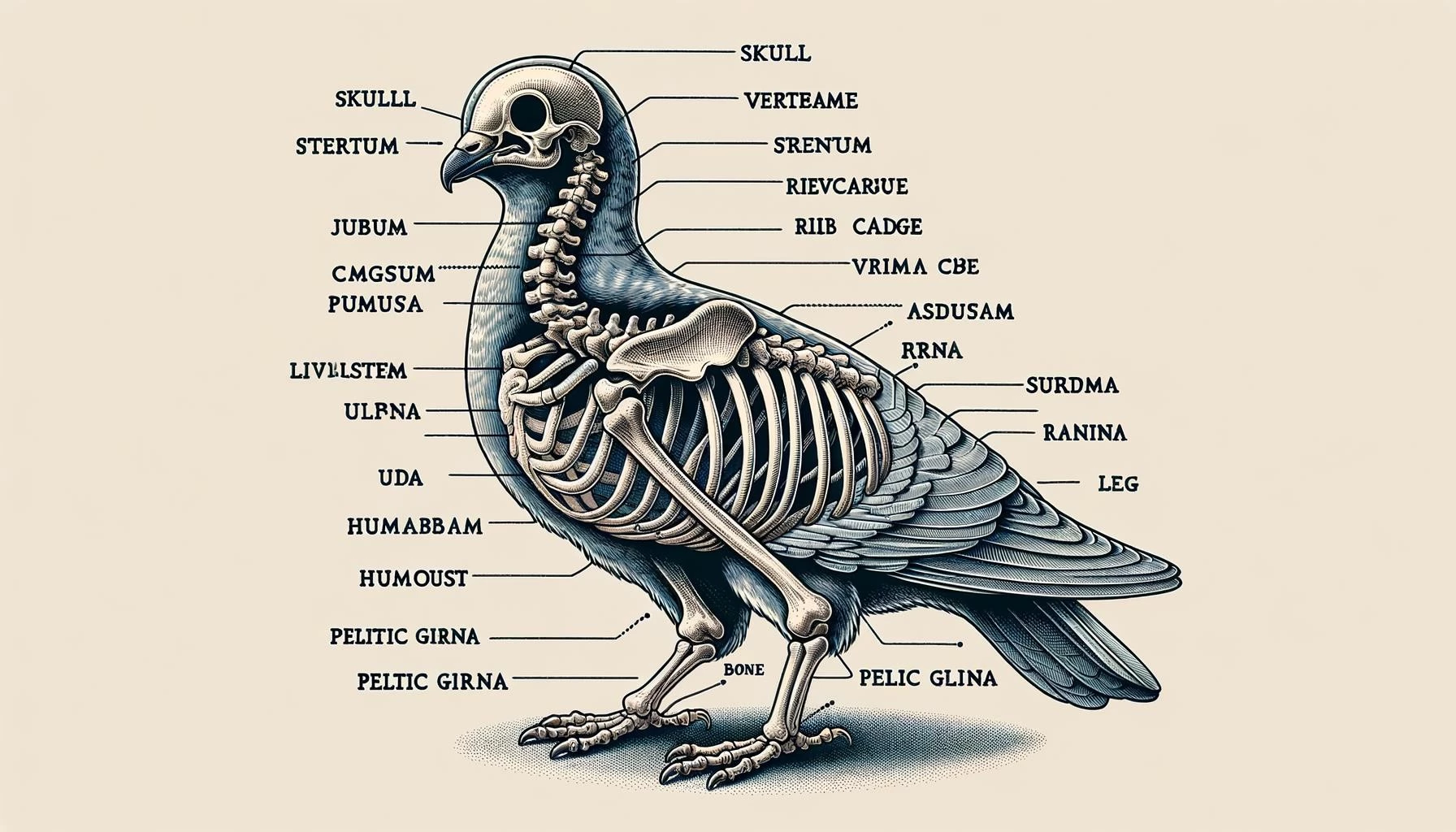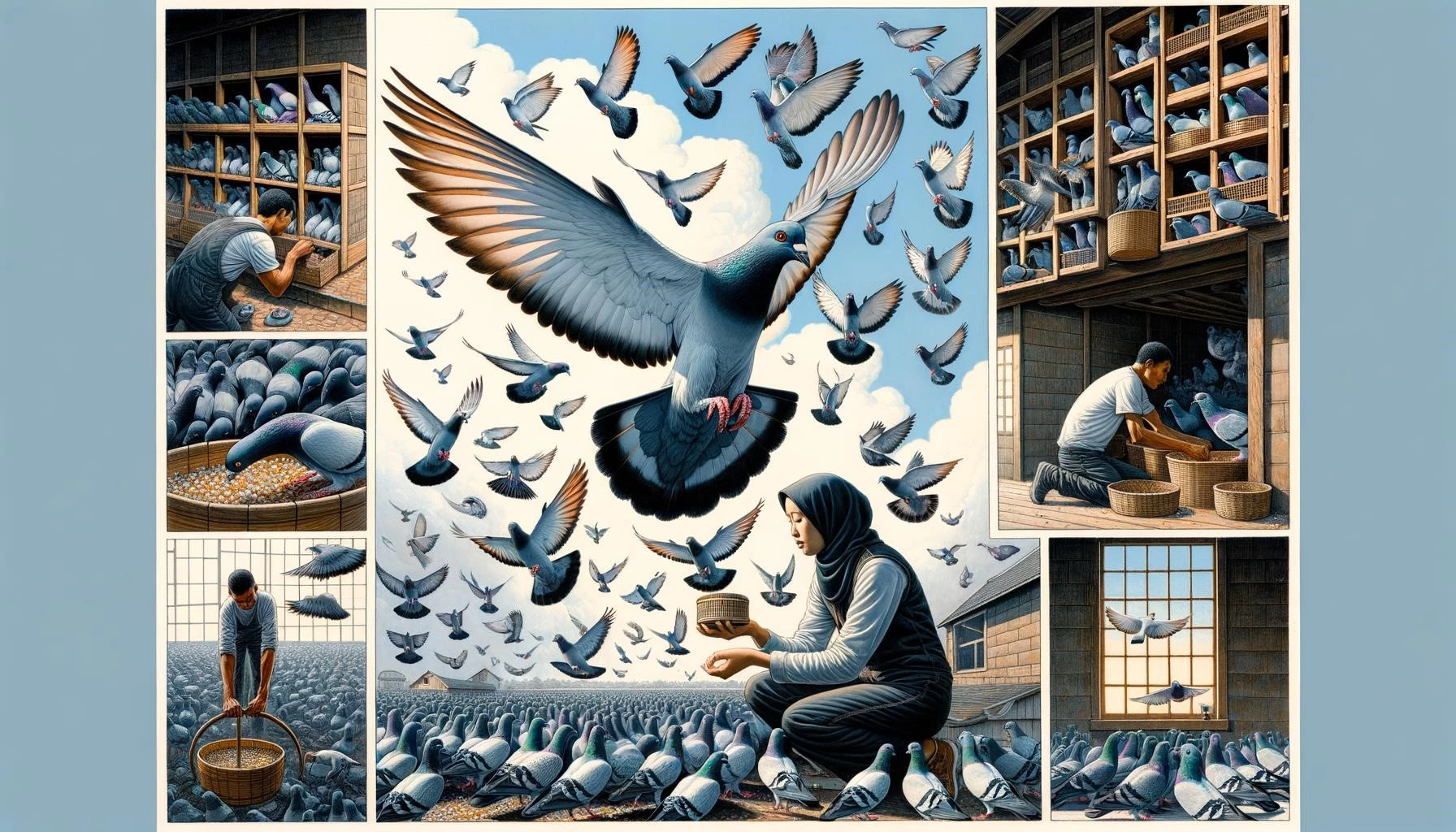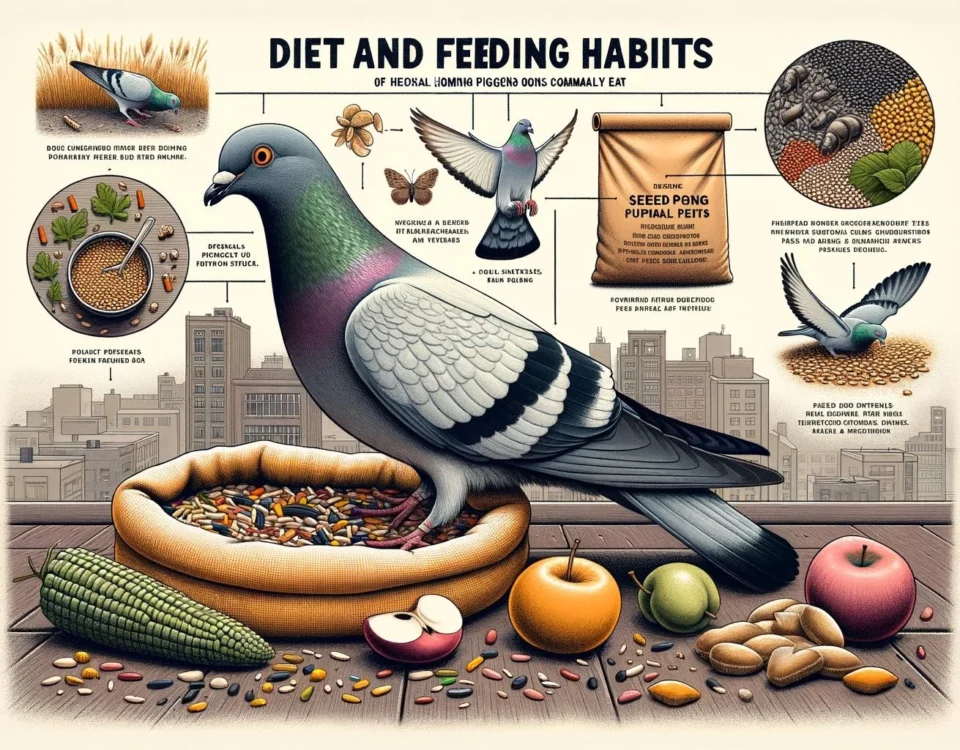Homing pigeons, also known as racing pigeons, are domesticated pigeons that have been selectively bred for their ability to find their way home over long distances. These birds were historically used as messengers and played a significant role in communication during times of war. Today, homing pigeons are often used in racing competitions where they are trained to fly long distances and return to their loft.
Key Takeaways
- Homing pigeons are selectively bred domesticated pigeons known for their ability to find their way back home over long distances.
- Racing pigeons are a variety of homing pigeons that are bred for enhanced speed and homing instinct.
- Proper housing, training, and care are essential for rehabilitating homing pigeons.
Housing and Care for Homing Pigeons
When rehabilitating homing pigeons, it is important to provide them with suitable housing and care. Pigeon lofts should be secure, protecting the birds from predators, and providing adequate space for them to fly and exercise. The loft should be equipped with nesting boxes, roosts, fresh water, and pigeon feed, which can be a mixture of grains and seeds.
Pigeons also require grit, such as crushed oyster shell or crushed granite, to aid in digestion. Proper ventilation is essential to maintain air quality within the loft. Additionally, it is crucial to keep the loft clean and hygienic to prevent the spread of diseases.
Training and Conditioning
Rehabilitated homing pigeons may need to be trained and conditioned before they can be released. Training begins in the loft, allowing the birds to establish the new loft as their home. Gradually, the birds can be released closer to the loft to build their endurance and familiarize themselves with their surroundings.
It is important to start training when the pigeons are young, as they are more likely to adapt to their new surroundings. For older pigeons, it may take longer for them to consider the new loft as their home. Consistent training and conditioning will help ensure that the pigeons develop the necessary skills to navigate their way back to the loft.
Rehabilitation and Release
When rehabilitating homing pigeons, it is essential to consider their safety and well-being. Injured pigeons should be provided with immediate care, including first aid, wound care, and medication if necessary. They may require special diets and physical therapy to aid in their recovery.
The duration of rehabilitation will vary depending on the extent of the pigeon’s injuries. Once the bird has fully recovered, it can be released into a suitable environment, ensuring that it has access to food, water, and shelter. It is important to choose a release location that is safe for the bird and allows it to navigate its way back to its loft with ease.
In conclusion, rehabilitating homing pigeons requires proper housing, care, training, and conditioning. By providing the necessary support and environment, injured or lost homing pigeons can be successfully rehabilitated and returned to their natural habitats.









